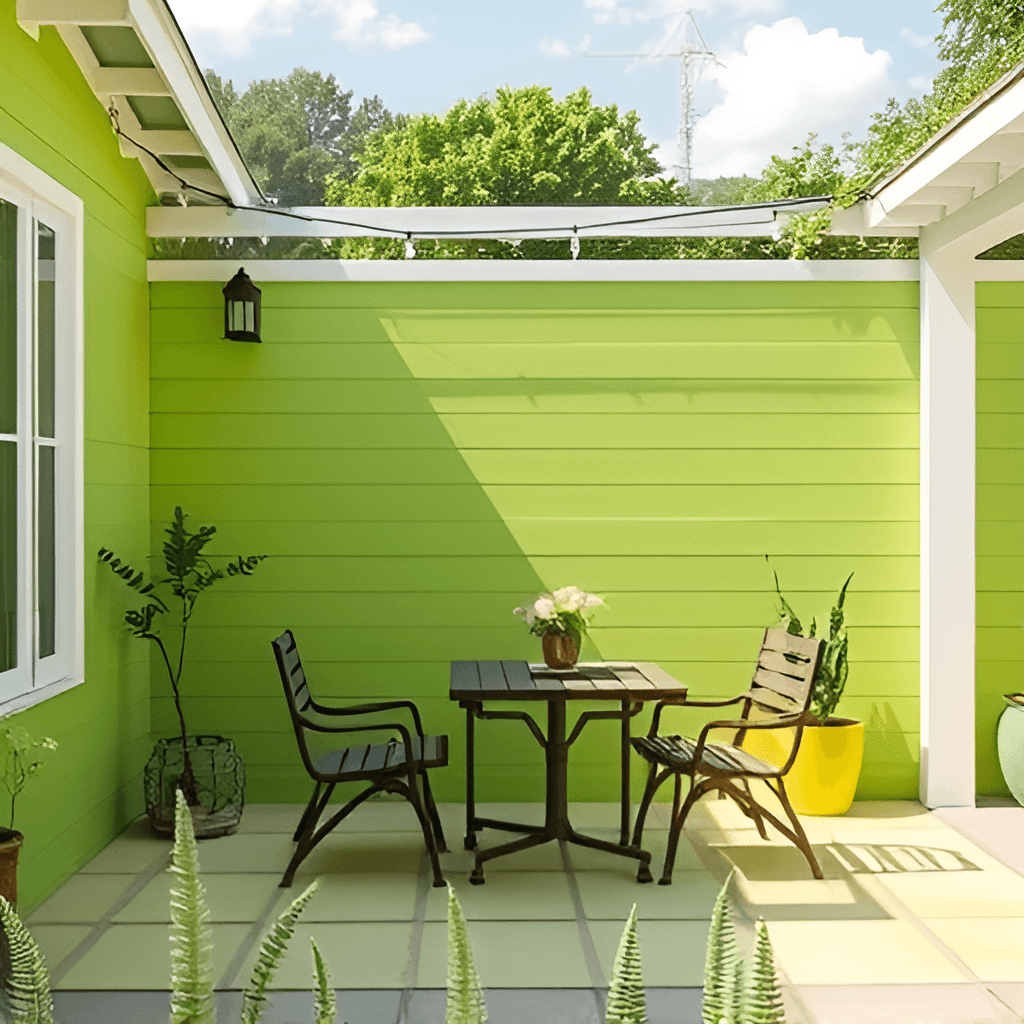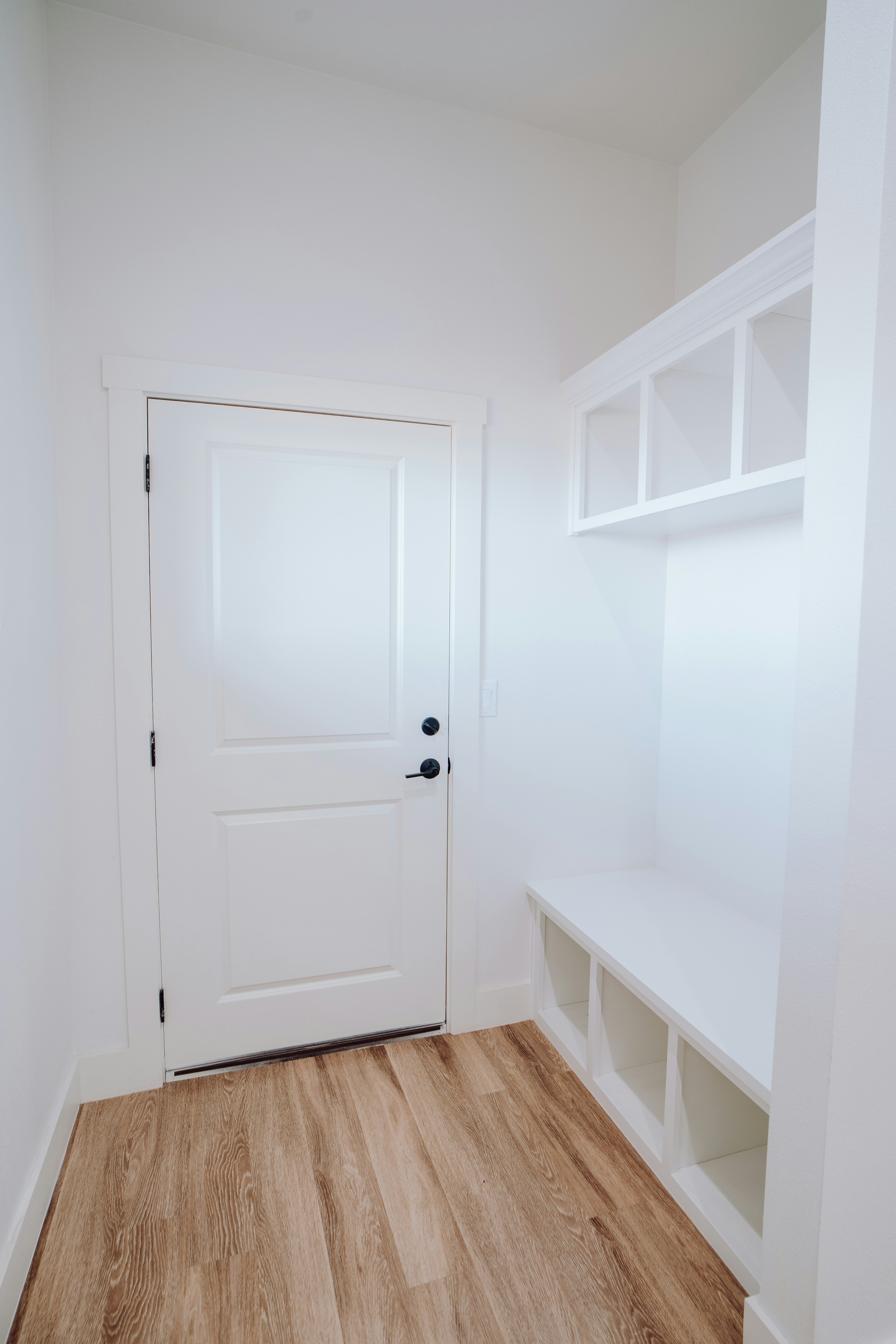Discover the benefits of lime paint for outdoor spaces. This environmentally friendly option allows for breathability, resists mold and adds beauty to your home. Learn how to prepare, apply, and maintain lime paint while exploring transformative color choices. Ideal for eco-conscious homeowners, lime paint not only rejuvenates your property but also aligns with sustainable living practices. Explore common mistakes to avoid and expert tips to ensure long-lasting results. Transform your outdoor areas with the unique charm of lime paint today!
Introduction to Lime Paint
Lime paint is a unique and environmentally-friendly option for those looking to refresh their outdoor spaces. Derived from natural limestone, lime paint has been utilized for centuries, tracing its roots back to ancient architectural practices. Its composition is fundamentally distinct from conventional paints, offering a range of advantages that appeal to environmentally conscious homeowners and professionals alike.

One of the most remarkable properties of lime paint is its breathability. Unlike many modern paints that create a barrier over surfaces, lime paint allows moisture to escape. This quality helps to prevent damage caused by trapped humidity, making it an excellent choice for exterior applications. Additionally, lime paint is alkaline, which makes it resistant to mold and mildew, ensuring that surfaces remain clean and aesthetically pleasing over time.
Please, read our post and do not forget to check our YouTube channel “Grig Stamate”:
https://www.youtube.com/@GrigStamate
You will find there, thousands of designing, furnishing, and decorating ideas for your home interior and outdoors.
Allow me to mention one of them:
LIVING ROOMS, Small Big Changes, Paint the Walls, 50 Inspirational ideas (video)
Another significant benefit of lime paint is its environmental impact. Unlike traditional paints that often contain volatile organic compounds (VOCs) and synthetic additives, lime paint is composed primarily of natural ingredients. This not only reduces harmful emissions but also contributes to healthier living environments. The sustainable nature of lime paint resonates with eco-conscious consumers looking to make responsible choices in home improvement projects.
Historically, lime paint has adorned countless historical buildings and structures, maintaining its place as a favored choice for preservation. Its rich texture and depth of color can transform outdoor areas, creating a warm and inviting atmosphere. Homeowners interested in revitalizing their spaces naturally should consider the aesthetic and functional benefits of lime paint. Through its unique characteristics, lime paint emerges as an exceptional choice for anybody aiming to enhance their property while mindful of the environment.
Why Choose Lime Paint for Outdoor Use?
Lime paint has gained recognition as a superior option for outdoor applications due to several intrinsic qualities that make it stand out from conventional paints. One of the primary attributes of lime paint is its breathability. Lime-based formulations allow moisture to escape, which is crucial for exterior surfaces exposed to varying weather conditions. Unlike traditional paints that can trap moisture, leading to potential decay and peeling, lime paint contributes to the longevity and durability of the substrate.
Another vital characteristic of lime paint is its flexibility during application. This natural medium can be easily adjusted to various textures and finishes, which means that it can accommodate a range of aesthetic preferences. Whether you’re looking for a smooth appearance or a more rustic, textured finish, lime paint offers versatility that caters to personal style and architectural integrity.
Moreover, lime paint demonstrates excellent resistance against mold and mildew, making it an ideal choice for areas that are frequently moist or humid. Its alkaline nature creates a hostile environment for mold growth, helping to maintain the cleanliness and freshness of painted surfaces. This quality not only extends the life of outdoor structures but also promotes a healthier living environment, free from toxic substances often associated with synthetic paints.
Personal experiences lend credibility to the effectiveness of lime paint. For instance, a homeowner who repainted their garden shed with lime paint observed a significant decrease in mold-related issues, alongside a refreshing aesthetic upgrade. Similarly, artists have reported using lime paint for murals on outdoor walls, noting its vibrant finish and long-lasting appeal, even in harsh weather conditions.
In summary, choosing lime paint for outdoor use grants numerous advantages, including its breathability, flexibility, resistance to mold, and durability. These properties not only enhance the visual appeal of outdoor spaces but also contribute to their long-term maintenance and sustainability.
Preparing Your Space for Lime Painting
To achieve optimal results when using lime paint outdoors, a thorough preparation of the area is essential. This process not only ensures that the lime paint adheres well but also enhances its performance over time. The following steps will guide you through preparing your space effectively.
Begin by cleaning the surfaces that you intend to paint. This involves removing any loose dirt, old paint, or mildew. A pressure washer can be an effective tool for this task, particularly for patios, brick walls, or wooden fences. If any stubborn stains remain, employ a stiff-bristled brush and a suitable cleaning solution. Ensure that the surface is completely dry before proceeding to the next step, as moisture can prevent proper adhesion of the lime paint.
Next, inspect the surfaces for any necessary repairs. Fill in cracks, holes, or flaking areas with the appropriate filler, allowing it to set and cure as outlined by the manufacturer’s instructions. Once the repairs are complete, sand down any rough patches to create a smooth, even surface. It is crucial to avoid painting over unstable or crumbling areas, as these can undermine the longevity of the finished job.
Choosing the right surface for lime painting is equally important. Lime paint is best suited for porous surfaces such as untreated wood, plaster, or masonry. Avoid using lime paint on non-porous materials like metal or vinyl, as these can lead to issues with adhesion and long-term durability. If you’re painting a previously coated surface, consider using a lime-compatible primer designed for such applications. This will aid in proper adhesion and enhance the aesthetics of the finish.
By carefully preparing your outdoor area, you can ensure that your lime painting project not only looks great but also stands the test of time. With the right techniques and materials, transforming your space into a refreshing, vibrant environment is entirely achievable.
The Application Process: Step-by-Step Guide
Applying lime paint outside may seem intimidating, but with the right guidance, it can be both an enjoyable and fulfilling experience. The first step is preparing your workspace and gathering all necessary materials. Ensure you have lime paint, water, a mixing container, brushes, sponges, and protective gear such as gloves and goggles. Identifying the surface you will be painting is crucial, as lime paint adheres best to porous substrates like brick, mortar, or stone.
Begin by mixing the lime paint. Combine the dry lime powder with water in a clean container. A helpful tip is to achieve a creamy consistency—this will facilitate a smooth application. Stir thoroughly to avoid lumps that could hinder the painting process. Allow the mixture to sit for a few minutes; this will enhance the paint’s natural properties, leading to a better adherence on the surface.
Before applying the first coat, clean the surface thoroughly. Remove dust, dirt, and any old peeling paint to ensure a strong bond between the particle of lime paint and the surface. A light misting of water on the surface can help with adhesion further. When you are ready, use a large brush or sponge to apply the paint evenly, working from one corner to the opposite side to maintain a wet edge. This technique prevents visible lines, ensuring an aesthetically pleasing result.
Common mistakes include applying the paint in direct sunlight or on rainy days, as extreme temperatures affect drying times adversely. Keep a steady pace and avoid overworking the paint, which could lead to uneven textures. Personal anecdotes can add humor to the task; think of the time when a painter accidentally painted their glasses instead of the wall! With patience and attention to detail, your project can transform into a natural and charming focal point of your outdoor space.
Choosing Colors: What Works Best Outside?
When it comes to the application of lime paint outdoors, selecting the right colors is crucial for achieving a revitalized and aesthetically pleasing space. The colors we choose not only impact the visual appeal but also evoke specific emotional responses and harmonize with the surrounding environment. Understanding color psychology is a valuable tool in this selection process. For instance, greens and blues often promote feelings of calmness and tranquility, mirroring the colors found in nature. Meanwhile, warm hues like yellows and oranges can create an inviting atmosphere.
Another important aspect to consider is how the colors interact with outdoor lighting conditions. Bright sunlight can wash out certain shades, making them appear lighter than intended, while overcast days may enhance more muted tones. Therefore, it is advisable to test color samples in varying lighting situations before committing to a broader application. Complementing existing natural elements, such as the greenery of trees or the textures of stone and brick, can enhance the overall aesthetic of your outdoor space. Shades that mirror these natural elements can create a cohesive and harmonious look.
Currently, some trending color palettes for outdoor spaces include earthy tones, muted pastels, and vibrant jewel tones. Earthy colors like terracotta and sage green resonate with nature, while pastel shades can breathe freshness into a space. For those looking to make a bold statement, jewel tones such as emerald or sapphire can provide a striking contrast against natural backdrops. As you embark on your outdoor lime painting project, consider questions such as: What mood do you want to evoke? Which colors align with your personal style? By reflecting on these aspects, you can make more informed and satisfying color choices.
Common Mistakes to Avoid When Using Lime Paint
Using lime paint for outdoor projects can yield stunning results; however, several common pitfalls can hinder the finishing quality and longevity of the paint application. One of the most significant mistakes is inadequate surface preparation. Unlike conventional paints, lime paint requires a porous surface to properly adhere. Failing to prepare the surface can lead to peeling and flaking, diminishing the aesthetic appeal of your newly painted area. Before applying lime paint, it is crucial to clean the surface of dirt, mildew, or chalky residues and ensure it is sufficiently rough and textured.
Another frequent error is misjudging the drying times associated with lime paint. Typically, lime paint dries quickly on the surface, yet the curing process can take much longer. Rushing to apply additional coats or to touch up areas can disrupt this critical process and lead to compromised adhesion or color inconsistencies. To avoid this, it is advisable to allow ample time for each layer to dry thoroughly, generally a minimum of 24 hours, depending on weather conditions.
Additionally, applying lime paint in unfavorable weather conditions is a prevalent mistake. Extreme humidity or direct sunlight can significantly affect the paint’s adhesion and finish. Ideal conditions typically involve moderate temperatures and low humidity to facilitate optimal drying and curing. Furthermore, failing to mix lime paint properly can lead to uneven color distribution and texture. Ensuring a consistent mixture before application will contribute to an even appearance and enhance the overall durability of your finish.
By being mindful of these common mistakes, including proper surface preparation, allowing adequate drying time, monitoring weather conditions, and mixing the paint correctly, you can achieve a vibrant and lasting finish that revitalizes your space naturally.
Caring for Your Lime Paint Finish
Maintaining the pristine appearance of lime paint on outdoor surfaces requires thoughtful care and attention. Due to its unique properties, lime paint can be more delicate than conventional paints, but with proper maintenance, it can retain its charm and vibrancy for years. First and foremost, regular inspections are essential. It’s advisable to examine the painted surfaces at least twice a year, ideally during the spring and fall. This will allow you to identify any cracks, chips, or signs of wear early on.
Cleaning is another crucial aspect of maintaining your lime paint finish. Since lime paint is porous and breathable, it is imperative to avoid harsh chemicals. A simple mixture of warm water and a mild soap can prove effective for routine cleaning. Using a soft sponge or cloth, gently wipe the surfaces to remove dirt and grime. In case of stubborn stains, a soft-bristle brush approximately once a season works well, provided you do not scrub too aggressively, as this could damage the finish.
Touch-ups may become necessary over time. If you notice areas where the color has faded or chipped off, prepare a small amount of lime paint to match the original shade. Applying a thin layer helps blend the touch-up seamlessly with the existing paint. When undertaking this task, it is advisable to work in cooler temperatures or during a cloudy day to prevent the paint from drying too quickly, which could lead to uneven coloring. Embracing this maintenance routine, albeit sometimes tedious, will ultimately save you from larger restoration projects down the line. Remember, caring for your lime paint finish is not just about aesthetics; it contributes to the longevity and health of the surfaces, ensuring they remain a focal point of your outdoor space.
Transformative Possibilities with Lime Paint
Lime paint has emerged as a favored choice for homeowners looking to refresh the aesthetic of their exteriors while embracing a natural approach. This section will highlight several case studies that exemplify the vibrant transformations made possible with lime paint.
One such project involved a modest cottage situated in a leafy suburb. The owners aimed to breathe new life into their aging facade. Before the transformation, the cottage showcased faded colors and peeling paint, giving it an uninviting appearance. After applying a fresh coat of lime paint in a soft sage green, the property radiated a rejuvenated charm. This change did not merely enhance the visual appeal but also reflected a commitment to sustainability, as lime paint is known for its eco-friendly properties. Local residents remarked on the striking improvement, viewing the transformation as an invitation to a more vibrant community.
In another instance, a historic home that had long been neglected received a remarkable facelift with lime paint. The home’s once-dull exterior was brought back to life with a rich terracotta hue, embracing the area’s cultural heritage. The homeowners shared how this transformation reignited their appreciation for the structure, fostering a sense of pride that inspired further renovations. Their story illustrates how a simple paint application can revitalize not just a building but also the spirit of the owners.
Lastly, a contemporary family residence utilized lime paint to harmonize with its natural surroundings. By selecting an earthy beige, the house seamlessly blended into the landscape, promoting a tranquil ambiance. Feedback from visitors highlighted the calming effect of the exterior, attributing it to the use of lime paint. This case study demonstrates how choosing the right color can contribute to a peaceful environment.
These transformations showcase the remarkable capabilities of lime paint, affirming its position as a versatile and sustainable option for homeowners seeking to enhance their outdoor spaces while cherishing authenticity and creativity.
FAQs About Lime Paint
Lime paint has garnered attention for its unique properties and environmental benefits, leading to several inquiries from potential users. One of the most common questions is about its application technique. Many people wonder if applying lime paint requires special tools. The answer is no; it can be applied with standard brushes or rollers. However, it is advisable to use a natural bristle brush, as it enhances the absorption of the paint and promotes better adhesion on porous surfaces. Proper surface preparation, including cleaning and ensuring adequate roughness, is also essential for optimal results.
Another prevalent query concerns the drying time of lime paint. Unlike conventional paints, lime paint typically dries faster, generally taking around 24 hours to fully cure depending on environmental conditions like temperature and humidity. During the drying process, lime paint undergoes a natural chemical reaction that allows it to harden and adhere better to surfaces. This means that good ventilation is crucial during this phase to facilitate effective curing.
Furthermore, many users express concern regarding the environmental impact of lime paint. It is important to note that lime paint is composed of natural materials, making it a sustainable choice for both interior and exterior applications. It is biodegradable, has low VOC emissions, and contributes to a healthier indoor and outdoor environment. Additionally, lime paint has excellent breathability, allowing moisture to escape from the walls, thereby preventing mold and trapped moisture.
Lastly, people often ask about the longevity of lime paint. With proper application and maintenance, lime paint can last many years, providing a durable and beautiful finish that can withstand various weather conditions. Regular touch-ups can help maintain its appearance and extend its lifespan, ensuring your outdoor spaces remain vibrant and refreshed.
Other related posts from our website:
https://howtobuildahouseblog.com/reviving-rusty-outdoor-furniture-a-complete-guide/
https://howtobuildahouseblog.com/ceiling-painting-with-wax-treatment-thats-how-its-done-in-4-steps/
Thank you so much for your attention.
Stay tuned. We will upload many other amazing posts to our website and videos onto our YouTube channel.
Thank you so much.
for your time and attention.
Best Regards
See you to another post,
Bye, Bye


